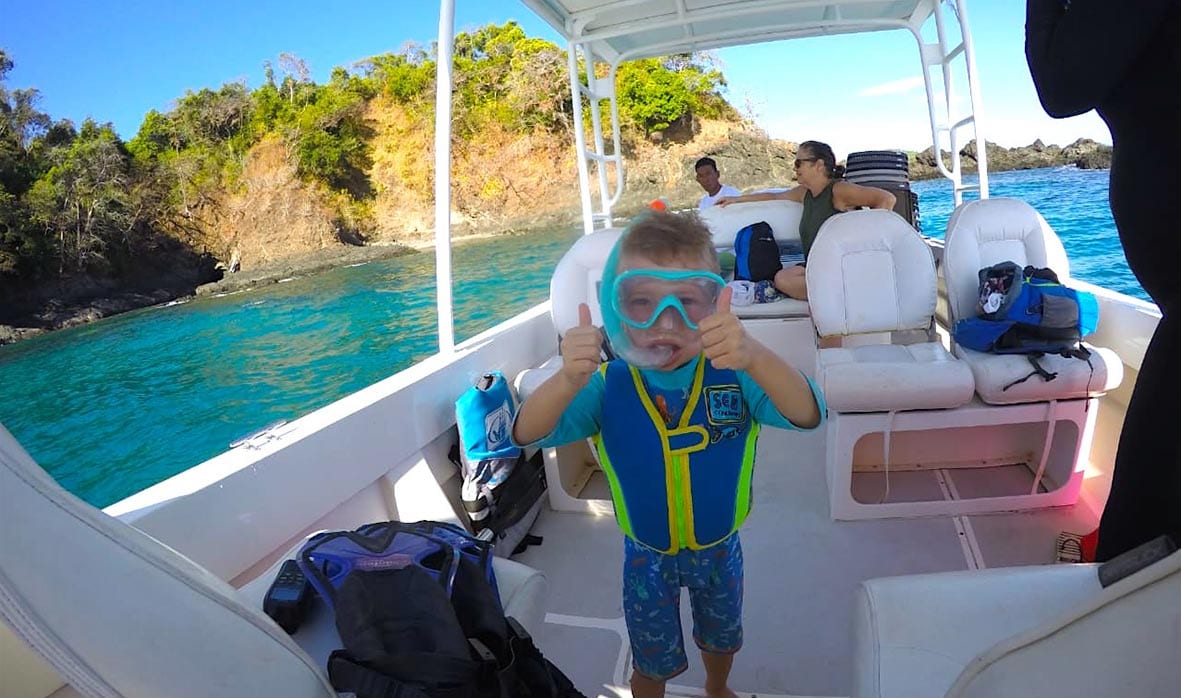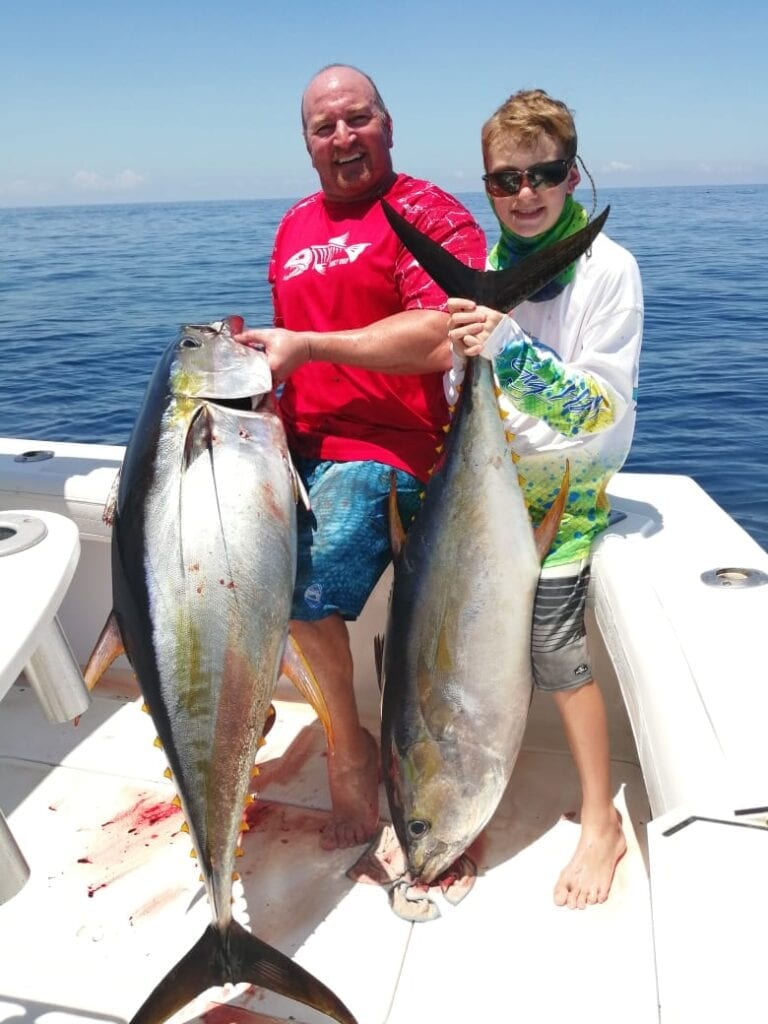Snorkeling in Panama
Snorkeling in Panama, get ready for adventure!
Those who are not certified to dive can always choose to go on a snorkeling trip in Panama. Top snorkeling sites are similar to diving sites, but you can see different things. Islands in the Pacific are wonderful for snorkeling, significantly better that the Pacific mainland. There is a lot to see and so many unique experiences of snorkeling in Panama.
San Blas
The wildlife and coral reef are untouched and remain completely unspoiled. Local indigenous Guna Yala don’t allow scuba diving, this is how San Blas remains preserved. One of the main reasons why the Guna’s won’t allow scuba diving is to protect their source of food. The indigenous locals fish only what is necessary. White sands and clear waters are home to tropical fishes and exotic coral reefs. Isla Perro is one of their most popular islands for snorkeling, its turquoise waters provide a great visibility. There is a sunken ship and as nature takes over, many coral reefs have formed. Therefore, while snorkeling you will spot algae and shells. There are 7 different species of sharks. Also starfish, jellyfish, flying fish, crab, sperm whales, hump whales, lobster, stingray, dolphins, squids and many colorful fishes.
This is one of the most popular spots for snorkeling in Panama. Around San Blas there are lodging options such as sail boats, cabins and other spots for camping too. The most recommended lodges are Cabañas Narasgandup (Naranjo Chico), San Blas Private Cabins, Mola Nega. Keep in mind the experience in the lodges is very rustic. If you are looking for a more upscale tour, then we suggest you consider sailing. There are different private charters to choose from.

What to bring?
Sunscreen, bathing suite, dry clothes, insect repellant, camera. If you choose to go out camping or stay in a cabin style lodge, you might have to bring in your own snorkeling equipment. You can also find some day tours that include all snorkeling gear. The sailboats are equipped with snorkeling gear too.
Isla Coiba
This is the largest island in Central America, with an area of 503 km2. It is located off the Pacific Coast of The Gulf of Chiriqui, in the Coiba National Park. Declared by UNESCO as a World Heritage Site. It was populated by indigenous groups until they were forced into slavery by the Spanish conquistadors back in 1560. After that it was transformed into a penal colony and became a secluded place of punishment for the most dangerous criminals. It has always been an isolated area, this is why it remains almost intact. In its tropical forest live 97 of the 147 species of birds found in Coiba National Park. The island is also home for many endemic subspecies and its waters offer shelter for four turtle species. It’s amazing to see How a Deadly Prison Island Became a Natural Paradise.
Coiba offers white sand pristine beaches, perfect for snorkeling. The species found here are similar to the ones found in Los Galapagos Islands in Ecuador. This is one good reason why this is one of the best experiences of snorkeling in Panama. You can spot reef shark, sea turtles, dolphins, whale sharks, bluebarred parrotfish, white-spotted puffer, king angelfish, amongst many other species.
The closest access point to Coiba is Santa Catalina. You can stay in Hotel Santa Catalina and go on a full day snorkeling tour with tour operators from the area. A great option to consider is with Watching Dolphin, enjoy snorkeling and a picnic in Isla Coiba. More information on how to visit the National Park, you must make previous arrangements. You can also stay in Cala Mia Resort which offers snorkeling around the Gulf of Chiriqui and diving excursions to Coiba.

What to bring?
Bathing suite, long pants and long sleeve t-shirt to snorkel, sunscreen. Water, snacks, camera. Make sure you book your tours to Isla Coiba with meals included as the kitchens that operate in the Park are for the operators. There are no restaurants or places to stay in the park, other than the ANAM ranger station.
Isla Coiba and the islands of the Coiba National Park are another great option for snorkeling in Panama.
Portobelo
This little town located in Colon is rich in pirate history. You will see the almost destroyed forts as the pirates tried to attack the old Panama City through this route. Portobello and San Lorenzo Fort where built to protect the Spanish’s Crowns gold and silver amongst other riches. These forts were attempted to be rebuilt after they were destroyed by Captain Henry Morgan and later on by Admiral Edward Vernon. What remains of them is now listed by UNESCO as World Heritage Site.
This is a great opportunity for snorkeling in Panama as you will also learn about the history of the Americas. You will get to know more about the historical pirate stories of Portobelo town as well as their Afro-Antillean culture. This experience should be on your top of the list of snorkeling in Panama. As it is a marine protected area, it is perfect for the reproduction of the species. In this experience you can snorkel around a 34m-long cargo ship and a C-45 twin-engine plane. In the snorkeling spots you will see a variety of reef fish and colorful coral reefs, butterfly fish, trumpet fish, damselfish. You could also spot nurse sharks, black-tip reef sharks and eagle rays. Definitely a great option for snorkeling in Panama.
Go on day tours and explore Isla Mamey or Isla Grande. You can enjoy longer stays in El Otro Lado and go on snorkeling tours as well as many other water activities they offer. Another recommendation to experience Portobelo is Casa Congo.
What to bring?
Bathing suite, sunscreen, insect repellent, dry clothes, hat, comfortable shoes, camera. Consider bringing snacks and water. You must experience the tasty Caribbean meals of El Palenque Restaurant. Its terrace overlooking the bay of Portobelo makes of this place a great option to visit.
Bastimentos National Marine Reserve
Located in Bocas Del Toro Archipelago, this is the first national marine park created in Panama in 1988. The island has area of more than 13,000 hectares and approximately 11,500 of these are home to wildlife, protected mangroves, forests and the wildlife that inhabitant these. There are 28 species of amphibians and reptiles, also 32 mammals and 68 birds species. The strawberry poison-dart frog is also very common to find in this island. The park stretches north with Playa Larga to Cayos Zapatillas and to Coral Cay. Isla Bastimentos southwest side also forms part of the national park as well as the north eastern side of this island which faces the Caribbean Sea.
Endangered species of sea turtles nest in Playa Larga’s beach from April to September. The reserve’s calmed waters are home to ocean iguanas, lobsters, barracudas, angelfish, caiman, crocodile and sharks. There are approximately 99 acres of the best conserved coral reefs of the Caribbean coasts of Panama. Also, the island offers the largest area of Caribbean mangrove swamp with red and white mangroves.
This might be the most extreme snorkeling in Panama you will experience.
You can plan your itinerary to go explore the marine park. Also Red Frog Beach is a good option to visit, located at the center of the Bastimentos Island Archipielago. A very good choice for vacationing there is in Red Frog Beach Resort which offers villas, condos and rooms for your stay while you enjoy the packages they offer.
In Bocas del Toro there are many options of places to eat, drink, stay and party. It has something for everybody, anywhere you choose to stay you can enjoy many different adventures and visit so many snorkeling spots too. Definitely plan on staying a minimum of 3 nights.

What to bring?
Bathing suite, sunscreen, sunglasses, insect repellent, dry clothes, hat, comfortable shoes, camera. Consider bringing snacks and water.
Gulf of Chiriqui
The marine park was founded in 1994. Its purpose is to protect mangroves, more than two dozen of islands, 19 coral reefs as well as marine and wild life. Howler monkeys, iguanas, tiger-herons, porcupines, armadillos and many bird species are part of the wildlife that inhabits these tropical forests. The park is also home to hawksbill and leatherback turtles, manta rays, white-tipped reef sharks, hammerhead sharks, and dolphins amongst other marine life. Also, you can watch the humpback whales that travel to Panama in search of warm breeding waters. These majestic creatures visit this area from July to October.
There are snorkeling spots in Isla Paridas, Bolaños and Gamez. However, the water is more clear and makes the visibility much better in Isla Secas and Isla Ladrones. Cala Mia Island Resort is located in the Boca Brava Island, a small island located in the Gulf of Chiriqui. The resort offers many water activities that are exclusive for guests and the most popular tour is the snorkeling tour to Isla Secas and its three beautiful spots.
Isla Secas and its three spots
The first spot is known as Barracuda, its located around an islet with a shallow but large and unique coral reef. In this spot you can spot butterfly fishes, a few species of parrot fishes (purple-brown, green and turquoise), angelfish, striped red mullet, cardinal fish, yellow and black pufferfish amongst others. In the next spot you get to snorkel in between rocks and 3 to 4 different types of soft corals. You might see eagle rays and in most of the rocky areas you can spot moray eels.
The third spot of this tour is in a relatively small rocky island where you can enjoy snorkeling around the coral reef that surrounds it. Dolphins like to play around these waters so its very possible to spot them at some point of the journey. It is quite easy to also spot big schools of fish and turtles while snorkeling.

What to bring?
Bathing suite, sunscreen, sunglasses, insect repellent, dry clothes, hat, comfortable shoes, camera. This is an experience definitely worth adding to your list of snorkeling in Panama.








